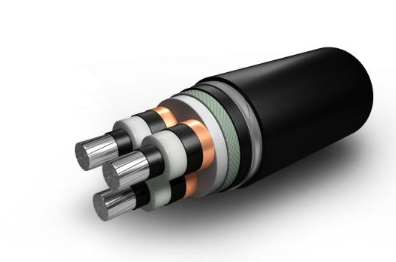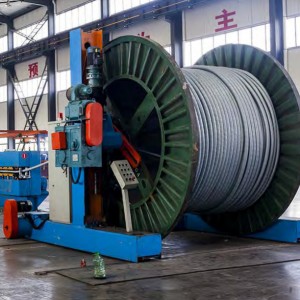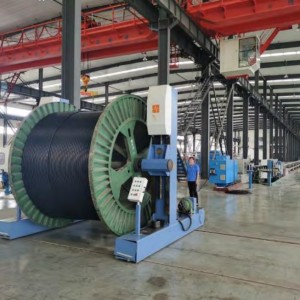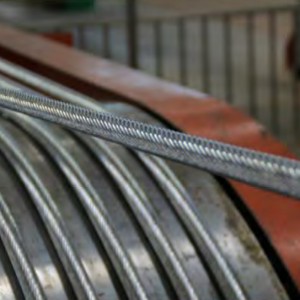Aluminum cables for power systems and communication systems
Description
Aluminum alloy power cable is a new type of power cable made of AA8030 series aluminum alloy material as conductor, adopting special roll-forming wire stranding production process and annealing treatment and other advanced technologies. The alloy power cable makes up for the deficiency of the previous pure aluminum cable. Although it does not improve the electrical conductivity of the cable, the bending performance, creep resistance and corrosion resistance are greatly improved, which can ensure the continuous performance and stability of the cable in case of long-term overload and overheating. The AA-8030 series aluminum alloy conductor can greatly improve the electrical conductivity and high temperature resistance of the aluminum alloy cable, and solve the problems of pure aluminum conductor and creep. The conductivity of aluminum alloy is 61.8% of the most commonly used reference material copper IACS, and the current carrying capacity is 79% of copper, which is superior to the pure aluminum standard. But in the same volume, the actual weight of aluminum alloy is about one third of that of copper. Therefore, the weight of aluminum alloy cable is about half of that of copper cable at the same ampacity. Replacing copper cable with aluminum alloy cable can reduce cable weight, reduce installation cost, reduce equipment and cable wear, and make installation easier.

Application
The good mechanical and electrical properties of aluminum alloy power cable make it widely used in various fields of the national economy, such as ordinary residential buildings, high-rise buildings, elevators, large and small supermarkets and malls, subways, airports, stations, hospitals, banks, office buildings, guest hotels, post and telecommunications buildings, exhibition halls, libraries, museums, ancient buildings, schools, power buildings, public entertainment places, tunnels Underground buildings and warehouses can also be used in metallurgy, steel, coke, coal mine, power plant, transmission and transformation power station, shipbuilding, petroleum, chemical industry, medicine, nuclear power station, aerospace, military, paper and other industries, as well as household appliances, automobiles, public transport facilities, etc
Features
1. Historical practice proves
It has been 53 years since the aluminum alloy cable was developed and used in the United States in 1968. The product has been widely used, and the market share in North America has reached 80%. After 53 years of practice, it has been proved that the aluminum alloy cable has never had any fault and is safe.
2. Testing and certification
The aluminum alloy cable has passed the testing and certification of UL in the United States, CUL in Canada, SAI GLOBAI in Australia and the testing and certification of China National Cable and Wire Testing Center, Wuhan High Voltage Research Institute of the State Grid, National Fire Protection Building Material Quality Supervision and Inspection Center and other authoritative institutions. The aluminum alloy conductor meets the requirements of Article 38 of CSA C22.2 on ACM alloy conductor, and the performance requirements of GB12706.1-2008 and IEC60502.1, the latest version, And UL standards related to AA8000 series.
3. Effect of aluminum alloy composition
◆ After the aluminum alloy conductor component is added with rare earth and iron, its conductivity and connection performance are greatly improved, especially when the conductor is annealed, the addition of iron produces high strength creep resistance. When the current is overloaded, the iron plays a continuous connection role, so that the aluminum alloy conductor will not creep.
◆ Creep is very harmful to the cable. If the cable creeps, the original contact point pressure is not tight enough, and the pressure reduction causes the contact resistance to increase rapidly. The current flows through the joint and causes overheating. If the cable is not repaired regularly, there will be potential safety hazards. It is very important to solve the problem of cable creep.
◆ Creep: under the action of temperature, external force and dead weight, the metal will slowly produce irreversible permanent deformation with the passage of time, which is called creep.
4. Flame retardancy
The insulation material of aluminum alloy cable is flame-retardant silane cross-linked polyethylene (XLPE), and the self-locking armor structure is adopted in the process. The heat dissipation performance is far better than the sheath of PVC material, which can dissipate heat quickly. The flame can be extinguished quickly after the flame disappears, and other materials will not be delayed. The flame retardant performance is extremely excellent. The aluminum alloy cable adopts new materials and new technology, which can ensure its safe use.




